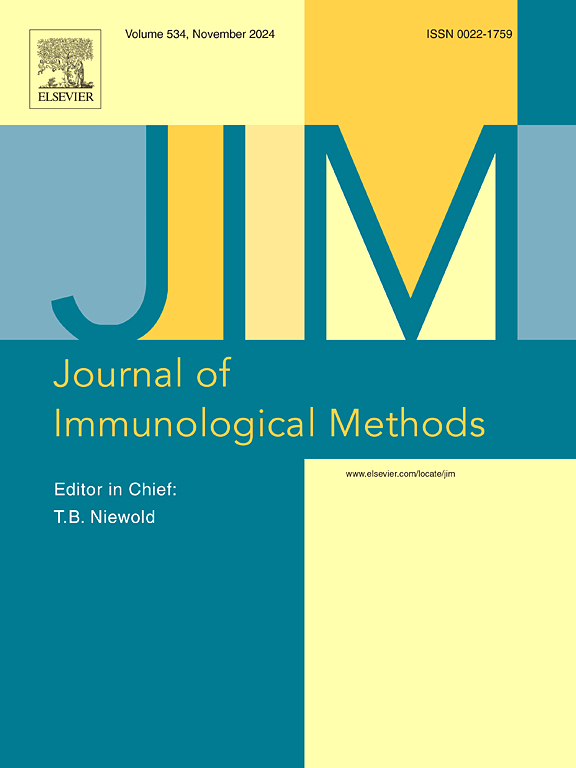Immunogenicity, biodistribution, and toxicology evaluation of Mycobacterium tuberculosis ag85a plasmid DNA in cynomolgus monkeys, mice and guinea pigs
IF 1.6
4区 医学
Q4 BIOCHEMICAL RESEARCH METHODS
引用次数: 0
Abstract
Background
Mycobacterium tuberculosis (MTB) Ag85A has become a component of multiple new tuberculosis vaccines. It is necessary to evaluate the immunogenicity, biological distribution, and safety of ag85a plasmid DNA (pDNA) to lay the foundation for the design of new vaccines.
Method
Chronic toxicity test: cynomolgus monkeys were injected intramuscularly with different doses of ag85a pDNA, and the vaccine absorption kinetics, tissue distribution, and toxicity were observed. Their immune function was evaluated. Acute toxicity test: Mice were injected intramuscularly 0.5 ml saline, and injected intramuscularly and intravenously 0.5 mg/0.5 ml ag85a pDNAs, respectively. The toxicity and death of the mice were observed continuously for 14 days. Allergic test: Guinea pigs were intraperitoneally injected with different doses of ag85a pDNA. After stimulation, the allergic reaction and its severity were observed.
Results
Chronic and acute toxicity tests demonstrated that ag85a pDNA injections caused no clinical symptoms or tissue damage. Repeated intramuscular injections in cynomolgus monkeys enhanced specific Th1 immune responses, with pDNA rapidly entering the bloodstream and its concentration positively correlating with dosage. After 8 weeks, ag85a gene was detected only in muscles, myocardium, iliac lymph nodes, and blood. Guinea pig allergy tests showed no weight changes or allergic reactions, even after multiple sensitizations.
Conclusions
The ag85a pDNA showed good safety in cynomolgus monkeys, mice, and guinea pigs, and induced high levels of antibodies and T-cell responses, making it a candidate antigen for the construction of a new tuberculosis vaccine.
结核分枝杆菌ag85a质粒DNA在食蟹猴、小鼠和豚鼠中的免疫原性、生物分布和毒理学评价
背景:结核分枝杆菌(MTB) Ag85A已成为多种新型结核病疫苗的组成部分。有必要对ag85a质粒DNA (pDNA)的免疫原性、生物分布和安全性进行评价,为新疫苗的设计奠定基础。方法:慢性毒性试验:对食蟹猴肌肉注射不同剂量的ag85a pDNA,观察疫苗的吸收动力学、组织分布及毒性。评价各组小鼠的免疫功能。急性毒性试验:小鼠肌肉注射生理盐水0.5 ml,肌肉注射和静脉注射ag85a pDNAs 0.5 mg/0.5 ml。连续14 d观察小鼠的毒性和死亡情况。过敏试验:豚鼠腹腔注射不同剂量的ag85a pDNA。刺激后观察过敏反应及严重程度。结果:慢性和急性毒性试验表明,注射ag85a pDNA没有引起临床症状或组织损伤。食蟹猴反复肌内注射增强了特异性Th1免疫反应,pDNA迅速进入血液,其浓度与剂量呈正相关。8 周后,仅在肌肉、心肌、髂淋巴结和血液中检测到ag85a基因。豚鼠过敏试验显示,即使在多次致敏后,也没有体重变化或过敏反应。结论:ag85a pDNA在食蟹猴、小鼠和豚鼠中表现出良好的安全性,并诱导高水平的抗体和t细胞反应,使其成为构建新型结核病疫苗的候选抗原。
本文章由计算机程序翻译,如有差异,请以英文原文为准。
求助全文
约1分钟内获得全文
求助全文
来源期刊
CiteScore
4.10
自引率
0.00%
发文量
120
审稿时长
3 months
期刊介绍:
The Journal of Immunological Methods is devoted to covering techniques for: (1) Quantitating and detecting antibodies and/or antigens. (2) Purifying immunoglobulins, lymphokines and other molecules of the immune system. (3) Isolating antigens and other substances important in immunological processes. (4) Labelling antigens and antibodies. (5) Localizing antigens and/or antibodies in tissues and cells. (6) Detecting, and fractionating immunocompetent cells. (7) Assaying for cellular immunity. (8) Documenting cell-cell interactions. (9) Initiating immunity and unresponsiveness. (10) Transplanting tissues. (11) Studying items closely related to immunity such as complement, reticuloendothelial system and others. (12) Molecular techniques for studying immune cells and their receptors. (13) Imaging of the immune system. (14) Methods for production or their fragments in eukaryotic and prokaryotic cells.
In addition the journal will publish articles on novel methods for analysing the organization, structure and expression of genes for immunologically important molecules such as immunoglobulins, T cell receptors and accessory molecules involved in antigen recognition, processing and presentation. Submitted full length manuscripts should describe new methods of broad applicability to immunology and not simply the application of an established method to a particular substance - although papers describing such applications may be considered for publication as a short Technical Note. Review articles will also be published by the Journal of Immunological Methods. In general these manuscripts are by solicitation however anyone interested in submitting a review can contact the Reviews Editor and provide an outline of the proposed review.

 求助内容:
求助内容: 应助结果提醒方式:
应助结果提醒方式:


